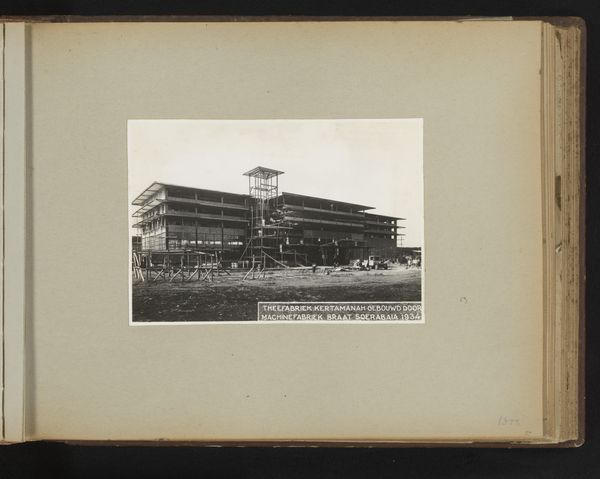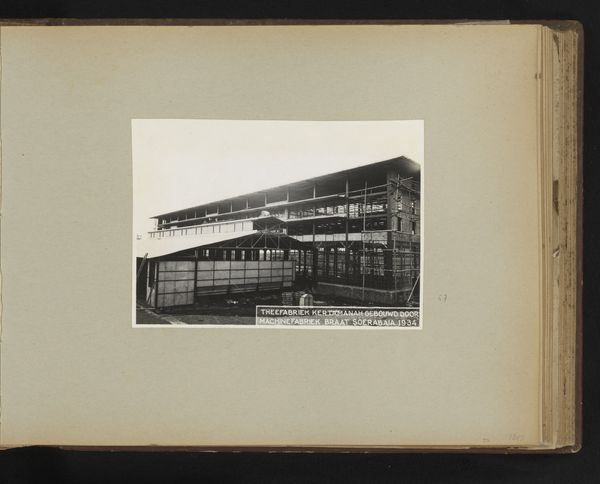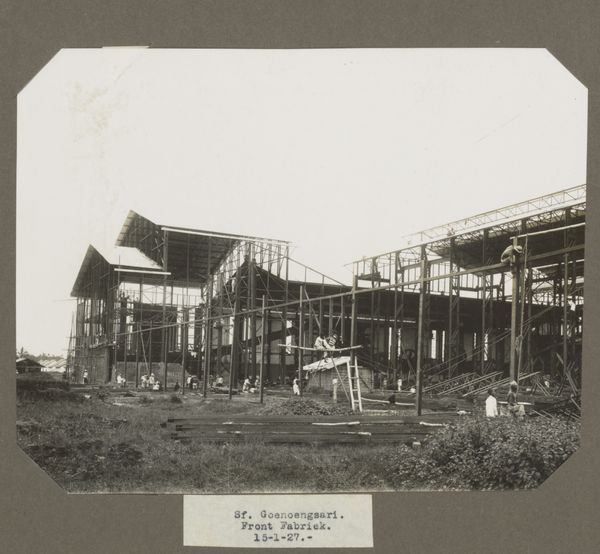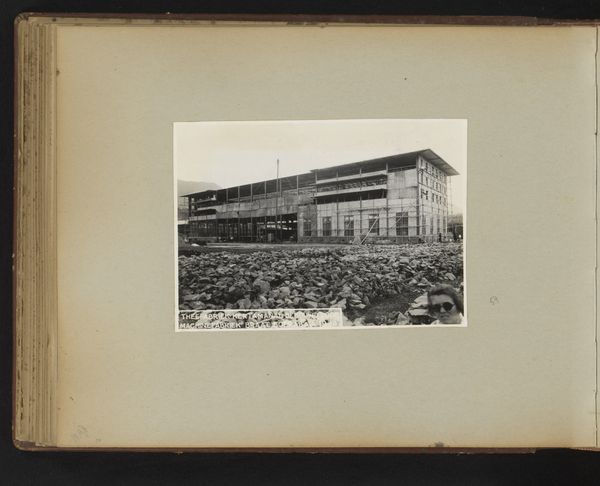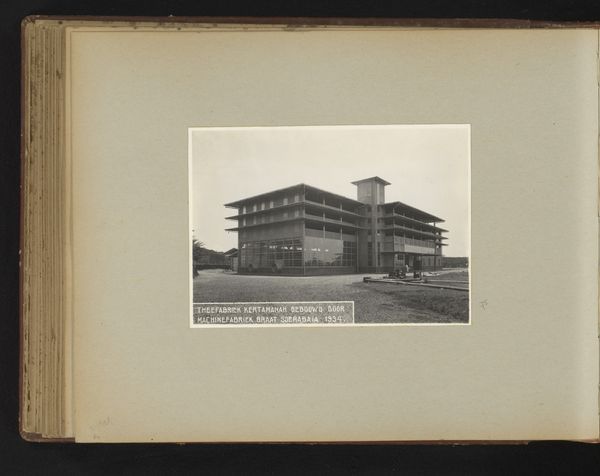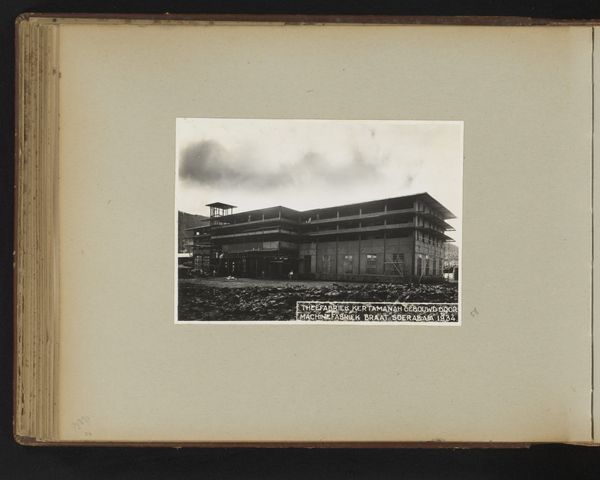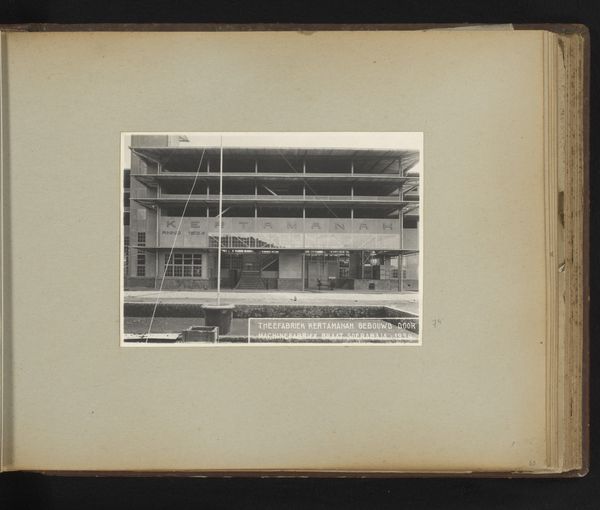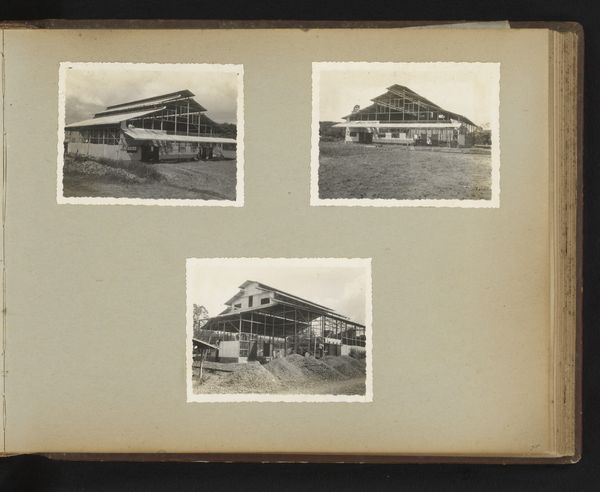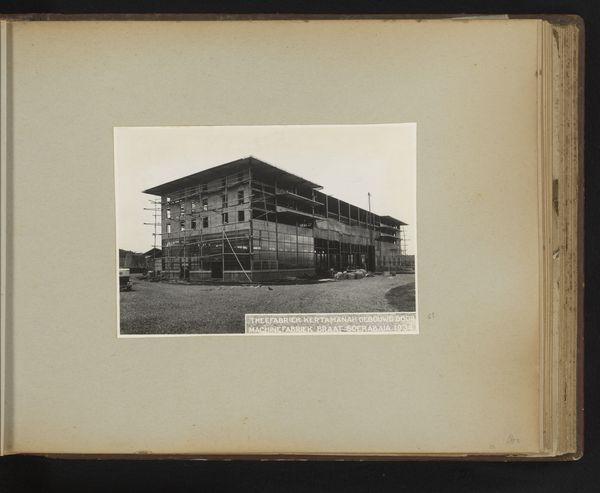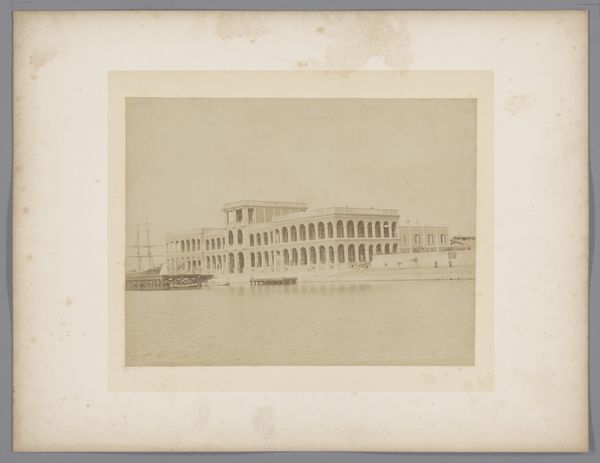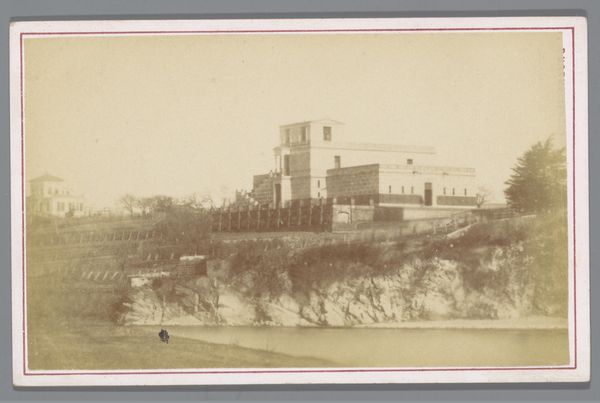
Marine Etablissement, Soerabaia / Reparatiewerkplaats voor onderzeebooten 1916 - 1924
0:00
0:00
anonymous
Rijksmuseum
print, photography, site-specific
# print
#
photography
#
site-specific
#
cityscape
#
modernism
Dimensions: height 179 mm, width 230 mm, height 240 mm, width 290 mm
Copyright: Rijks Museum: Open Domain
Curator: This black and white photograph is titled "Marine Etablissement, Soerabaia / Reparatiewerkplaats voor onderzeebooten," dating from between 1916 and 1924. The location is given as the Rijksmuseum. Editor: It evokes such a strong sense of industry, but it's incomplete, raw. You see the bare bones of this construction, like the skeleton of some massive beast rising up from the earth. The grayscale makes it feel stark and functional. Curator: Right. Looking at it, I’m immediately drawn to the history embedded in this scene. This is a snapshot of Dutch colonialism in present-day Indonesia. We are not merely viewing the building of a submarine repair workshop; we're seeing a physical manifestation of imperial power. Who benefited from this establishment? Who were the laborers, and under what conditions did they work? These are crucial questions that come to mind. Editor: Absolutely. And you can practically feel the labor involved, even in the absence of any visible workers. The photographic process itself, of course, depended on their labor and skills, both local and imported. You see the stacks of materials waiting to be transformed. The entire image is about material transformation and the channeling of resources into the physical manifestation of military power. The deliberate construction, the planning, the very nuts and bolts, are all part of that story. It raises questions about consumption, considering the raw materials required and the purposes of their conversion. Curator: Indeed, considering the site-specific nature of this image is essential to fully understanding its broader social and historical implications. The location isn't arbitrary; it speaks volumes about resource extraction, trade routes, and strategic control. How does that context affect our reception of a cityscape presented in modernist aesthetic terms? It's imperative to acknowledge how art is inherently implicated in societal systems, not neutral from them. Editor: Seeing this, I am struck by how crucial it is to unpack the conditions under which such imagery and structures come into existence, examining not only the form but the tangible consequences of those processes. Curator: This conversation is a potent reminder of how looking critically can lead to recognizing art as more than isolated artifacts. Editor: It reminds me to stay alert to the realities and impact, intended or not, of art objects.
Comments
No comments
Be the first to comment and join the conversation on the ultimate creative platform.
